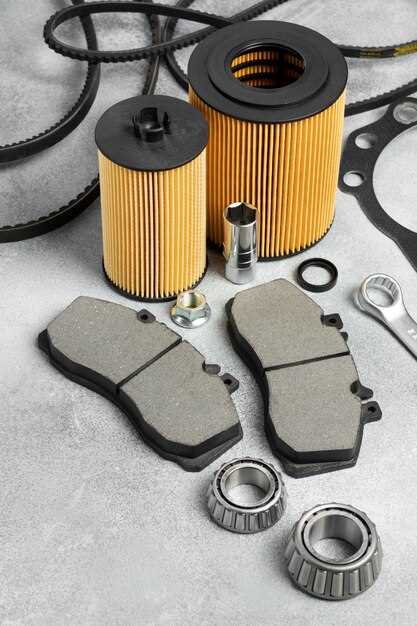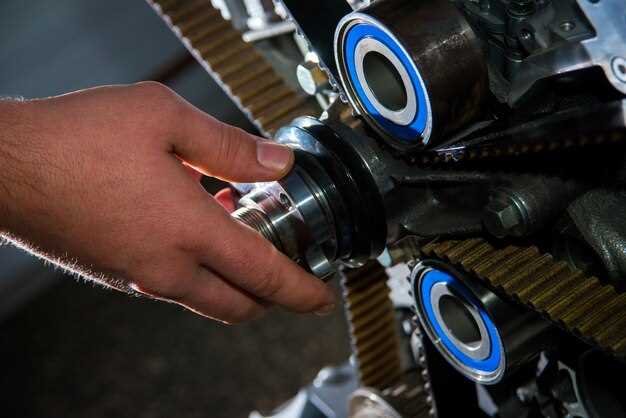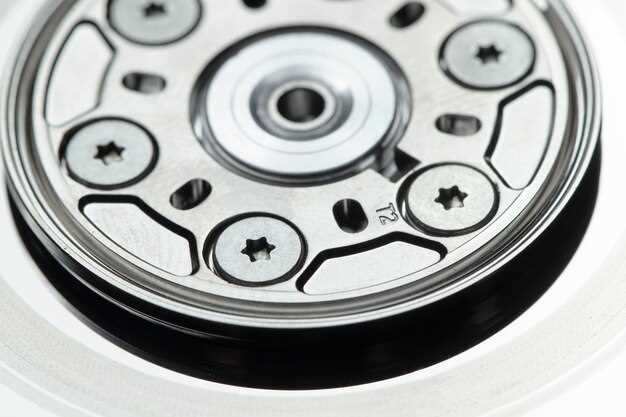
In the world of motorsports, the difference between victory and defeat often hinges on the smallest details. One such detail is the clutch system, which plays a pivotal role in efficiently transferring power from the engine to the wheels. When it comes to driving on the track or the strip, having the right clutch kits can significantly enhance your vehicle’s performance. A high-quality clutch system ensures faster gear shifts, improved feedback, and greater durability under extreme conditions.
Track and strip performance demands components that can withstand high levels of stress and heat. Therefore, selecting a clutch kit specifically designed for these environments is crucial. These kits are engineered to provide the necessary grip and responsiveness that competitive driving requires. With a variety of options available, understanding the unique features and benefits of top-rated clutch kits can help you make an informed decision that aligns with your performance goals.
In this article, we will explore the best clutch kits available on the market today, focusing on their features, advantages, and suitability for serious automotive enthusiasts. Whether you’re looking to improve your lap times or achieve faster quarter-mile runs, investing in a performance-oriented clutch kit is essential for any serious driver aiming for the podium.
Choosing the Right Clutch Material for Track Use
When it comes to maximizing performance on the track, selecting the right clutch material is crucial. The choice of material affects not only power transfer but also the overall durability and responsiveness of your clutch kit. Each type of material has its strengths and weaknesses, making it essential to understand how they impact your track performance.
Organic materials are often favored for street use due to their smooth engagement and low noise levels. However, when it comes to track performance, they tend to wear out quickly under high-stress conditions. For serious racing scenarios, this can result in premature failure, compromising your vehicle’s performance during critical moments.
On the other hand, metallic clutches, which comprise a blend of steel and other compounds, offer superior heat resistance and longevity. They are designed to withstand higher torque levels and can handle the stress of repeated launches and hard shifting, making them a popular choice for track enthusiasts. However, they may deliver a harsher engagement experience, requiring drivers to adjust their techniques accordingly.
Carbon composite clutches are another excellent option for those seeking top-tier performance. These clutches provide exceptional grip and heat dissipation, allowing for quick engagement and minimal slip. While they tend to be more expensive, many racers consider them worth the investment for the incredible performance they deliver on the strip.
Ultimately, the ideal clutch material depends on your specific racing needs, driving style, and vehicle setup. Understanding the properties of each material will help you make an informed decision that enhances your track performance and meets the demands of your racing environment. Take the time to analyze your options and invest in a clutch kit that aligns with your performance goals.
Comparing Single vs. Multi-Disc Clutch Kits
When it comes to enhancing vehicle performance on the track or strip, clutch kits play a critical role. Among the options available, single-disc and multi-disc clutch kits are the most popular choices, each offering unique advantages and considerations for performance enthusiasts.
Single-disc clutch kits are commonly used in various applications due to their simplicity and ease of installation. These kits typically feature a single friction disc and offer robust performance suitable for street and mild track use. They provide a smooth engagement and are often less demanding on drivability compared to multi-disc setups. However, their performance limitations become apparent under extreme conditions, such as high horsepower levels or repeated hard launches, where their single surface area may struggle to manage the power effectively.
On the other hand, multi-disc clutch kits consist of two or more discs, which significantly increase the surface area available for friction. This design allows for higher torque handling capabilities, making them ideal for racing applications and high-performance street cars. The primary advantages of multi-disc systems include improved heat dissipation and reduced slippage, which translates to more consistent power delivery during aggressive driving scenarios. However, these kits can introduce a stiffer pedal feel and may require more careful tuning to ensure optimal performance.
In summary, the choice between single and multi-disc clutch kits ultimately depends on the specific performance goals and driving style. For those seeking reliability and ease of use in street applications, a single-disc kit may suffice. Conversely, for serious racers aiming for maximum grip and power transfer, investing in a multi-disc clutch kit is likely the better option. Careful consideration of your vehicle’s needs will help in making the best choice to achieve your performance aspirations.
Understanding Clutch Pedal Feel and Engagement Characteristics

When considering clutch kits for track and strip performance, it is essential to understand how clutch pedal feel and engagement characteristics can influence overall driving dynamics. The interaction between the driver and the vehicle is heavily influenced by the clutch’s design and functionality.
Clutch pedal feel refers to the level of resistance and feedback a driver receives when depressing the clutch pedal. This characteristic can significantly affect how effectively a driver can execute gear changes during intense driving conditions. Here are some critical aspects to consider:
- Pedal Effort: The amount of force required to engage the clutch affects overall performance. Lower effort setups may allow for quicker shifts, while higher effort setups can provide more tactile feedback.
- Release Point: The point at which the clutch begins to engage is crucial. A sudden engagement can lead to wheel spin, while a smooth, predictable engagement allows for more control, particularly in racing scenarios.
- Travel Distance: The distance the pedal must travel before the clutch engages can impact how quickly the driver can shift gears. Shorter travel distances are often preferred in performance applications for rapid gear changes.
Engagement characteristics describe how the clutch connects and disconnects the engine’s power to the drivetrain. A well-designed clutch kit will exhibit traits that enhance vehicle performance:
- Modulation: The ability to control the engagement rate affects traction. Clutches that allow for better modulation provide drivers with more options for managing power delivery, especially in high-stakes environments.
- Heat Resistance: Performance clutches must withstand higher temperatures without fading. This durability ensures consistent engagement characteristics over extended periods of use.
- Material Composition: The materials used in the clutch kit, such as ceramic or organic composites, can greatly influence both feel and engagement. Performance-oriented materials are designed for quick engagements and higher tolerances.
In conclusion, understanding clutch pedal feel and engagement characteristics is vital for selecting the right clutch kit for track and strip applications. Drivers need to consider how these factors contribute to overall performance and vehicle control, ensuring that the chosen kit meets their specific racing needs.
Installation Tips for Maximizing Performance Gains
Proper installation of clutch kits is crucial for optimal performance on the track or drag strip. Start by ensuring that all necessary tools are on hand and that you have a clean, organized workspace. A well-lit area can help prevent errors during installation.
Begin by closely following the manufacturer’s instructions for your specific clutch kit. Different performance kits may have unique requirements. Proper alignment during installation is essential; misalignment can lead to premature wear and suboptimal performance. Use alignment tools if provided, or consider a professional alignment tool to ensure precision.
Cleaning all contact surfaces is vital. Oil, grease, or dirt can hinder performance and lead to slippage. Use a suitable cleaning solvent to remove any residue from the flywheel and pressure plate. Inspect these components for signs of damage or wear before proceeding.
Torque settings are another critical aspect of installation. Over-torquing or under-torquing bolts can result in a failure. Always utilize a calibrated torque wrench and adhere to the specifications provided in the installation manual.
Consider upgrading to performance-oriented fluids for the transmission and hydraulic components. High-quality fluids can enhance performance and responsiveness, providing a noticeable difference during driving.
After installation, it’s advisable to perform a proper break-in period, as outlined by the clutch kit manufacturer. This process can enhance the longevity of the clutch and ensure optimal performance during spirited driving scenarios.
Lastly, regularly check the adjustment of your clutch pedal after installation. Maintaining the correct pedal height and free play can significantly affect clutch engagement and overall driving experience.
Top Brands: Which Clutch Kits Excel in Competitive Settings?

When it comes to optimizing your vehicle for track and strip performance, choosing the right clutch kit is crucial. Certain brands have established themselves as leaders in producing reliable, high-performance kits that endure the demands of competitive driving.
Here are some of the top brands known for their excellence in clutch kits for racing environments:
| Brand | Key Features | Performance Highlights |
|---|---|---|
| Exedy | High friction materials, lightweight design | Offers exceptional engagement and heat resistance, ideal for competitive driving. |
| ACT (Advanced Clutch Technology) | Heavy-duty construction, wide range of options | Recognized for clutch longevity and improved power transfer, suitable for drag racing. |
| Clutch Masters | Composite materials, adjustable pressure plates | Provides outstanding grip and modulation, enhancing performance in varied conditions. |
| Centerforce | Dual friction technology, self-adjusting pressure | Optimizes torque capacity and has a smooth engagement, perfect for track applications. |
| Monster Clutch | Durable springs, high clamp load | Engineered for extreme performance and racing applications, designed to handle high power outputs. |
These brands have proven their worth on the track, making them excellent choices for those seeking performance-oriented clutch kits. Each offers unique features tailored to enhance driving dynamics and withstand the rigors of competition, ensuring reliable performance when it matters the most.
Maintenance and Troubleshooting Common Clutch Issues
Proper maintenance of your clutch is essential for optimal performance, especially when using high-performance kits tailored for track and strip applications. Regular inspections can prevent many common issues and extend the life of your clutch system.
One of the first signs of clutch problems is slippage. If you notice the engine revving without a corresponding increase in vehicle speed, the clutch may not be engaging fully. This can be caused by worn friction material, improper installation, or an issue with hydraulic pressure. Checking the adjustment and ensuring the hydraulic fluid is at the correct level can often rectify the problem.
An additional common issue is difficulty in shifting gears. This can stem from several factors, including worn clutch components or a misaligned linkage. Inspecting the clutch pedal’s free play and ensuring the release bearing is functioning correctly are vital steps in troubleshooting this problem. If the issue persists, the complete clutch assembly may need to be examined for wear or damage.
Overheating can lead to premature wear and decreased performance of your clutch. This can happen due to aggressive driving or excessive slipping. To mitigate this, it’s crucial to ensure that your clutch kits are matched to your vehicle’s power output and driving style. Additionally, incorporating a cooling solution, such as a high-performance transmission fluid, can help maintain optimal temperatures during use.
Lastly, abnormal noises when engaging or disengaging the clutch often indicate mechanical failure. Grinding or rattling sounds can point to issues with the release bearing or damaged clutch disc. Identifying and addressing these symptoms early can prevent further damage and costly repairs.
By consistently monitoring performance and promptly addressing any issues, drivers can ensure that their clutch systems remain in peak condition, allowing for superior performance on the track and strip.






